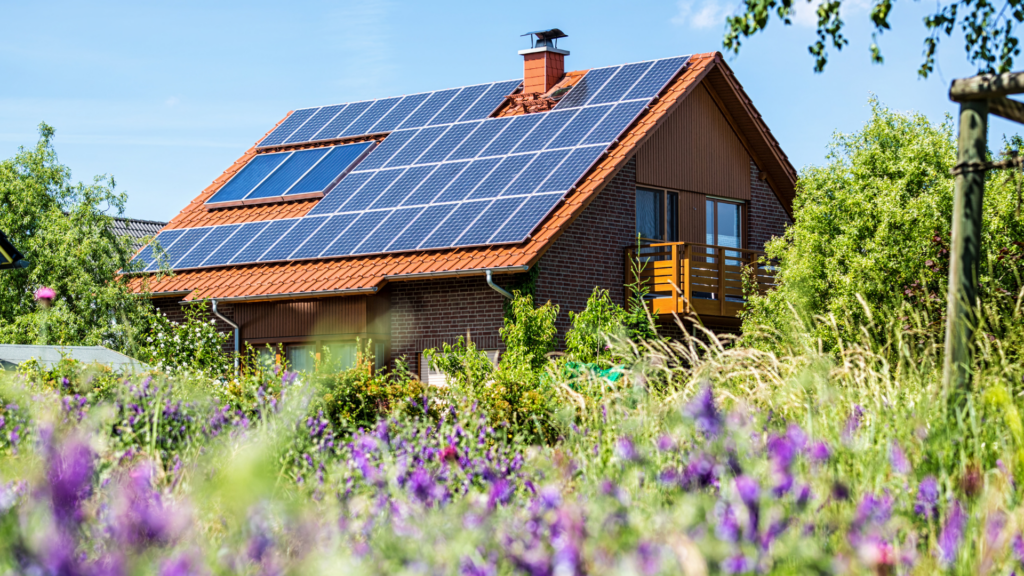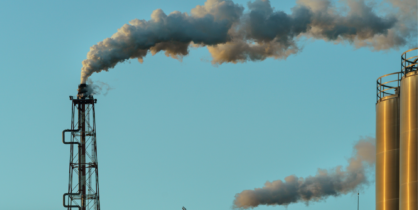How Affordable Energy Boosts Competitiveness and Green Transition Success
With the Affordable Energy Action Plan, the EU aims to cut costs, drive decarbonisation, and ensure no one is left behind – REVOLVE unpacks how.
Making Europe more competitive has been the talk of the town in Brussels since Mario Draghi, former Italian prime minister and the president of the European Central Bank, published his report in September 2024, focused on competitiveness. The EU has since shuffled its economic agenda, putting competitiveness at its heart. In doing so, this would make sure that European businesses thrive in a world where climate change, AI and geopolitical challenges constantly expand and evolve.
To address challenges like high energy costs, fierce global competition, and the need for a more resilient and sustainable industrial sector, the European Union published the Clean Industrial Deal. The Deal aims to boost production stages, focusing on the energy-intensive industries and the clean-tech sector. The former would tackle high costs, unfair global competition, and complex regulations, whilst the latter would be put forward as a necessary step for industrial transformation, circularity, and decarbonisation.
At the core of the Clean Industrial Deal and the EU’s competitiveness, is affordable energy. Simply put, to fulfil the Clean Industrial Deal, Europe needs affordable energy. The European Commission (EC) adopted the Affordable Energy Action Plan to lower energy bills for industries, businesses and households, while promoting the transition to a low-carbon economy.
At the core of the Clean Industrial Deal and the EU’s competitiveness, is affordable energy.
REVOLVE explores the implications of this action plan through key lenses, including the Emissions Trading System 2 (ETS2), energy poverty, affordable housing, and how EU-funded projects can help accelerate the plan’s goals.
The importance of the ETS2
The Affordable Energy Action Plan represents a broader effort to transform Europe’s energy landscape. The plan sets out to lower energy costs for consumers, complete the Energy Union, attract clean energy investment, and strengthen resilience against energy crises.
However, the plan is not without its shortcomings, Eleanor Scott of Carbon Market Watch says to REVOLVE. “Crucially, it makes no mention of ETS2, despite the system’s far-reaching implications for energy affordability and climate justice. Additionally, the plan continues to endorse investment in new gas infrastructure – an approach that many experts view as risky and short-sighted, particularly given the volatility of fossil fuel markets and the EU’s long-term decarbonisation goals”, she adds.
The European Union’s ETS2 introduces a carbon pricing mechanism that targets fossil fuel use in buildings, road transport, and small industries. Its core objective is to reduce greenhouse gas emissions by making polluting fuels more expensive, hence making cleaner fuels the better business decision. This is what economic incentives are all about.

However, a growing concern is that ETS2 may disproportionately impact lower-income households, who already spend a higher percentage of their income on energy, Scott points out. “Without proper safeguards, this could deepen existing inequalities and exacerbate energy poverty”, she adds.
To address these risks, the EU has established the Social Climate Fund, a €86.7 billion instrument designed to support vulnerable groups. Yet, there is widespread acknowledgment that this fund alone may not be sufficient.
“Energy poverty remains a pressing issue across Europe, affecting over 40 million citizens who are unable to adequately heat their homes”, Scott says. As the June 2025 deadline approaches, EU Member States are required to submit comprehensive Social Climate Plans. These must clearly identify populations at risk of energy and transport poverty and propose effective strategies to mitigate the impact of rising energy costs.
Energy poverty remains a pressing issue across Europe, affecting over 40 million citizens who are unable to adequately heat their homes.
The broader message is clear: relying solely on ETS2 to drive decarbonisation is not enough. Complementary policies – such as mandatory building performance standards and ambitious CO₂ targets for vehicles, as well as the initiatives like the Affordable Energy Action Plan – are essential to contain demand and keep ETS2 prices manageable. “Equally important is building strong public trust”, Scott says. Transparent communication, meaningful public engagement, and inclusive decision-making will be crucial to prevent political backlash and ensure that climate policies are both effective and socially just.
Housing and the Affordable Energy Action Plan
“The Affordable Energy Action Plan stands out as one of the key initiatives of the Clean Industrial Deal that is relevant to social, cooperative, and public housing sector, with a focus on reducing energy costs through network tariffs, taxes, and consumer rights”, Julien Dijol, Deputy Secretary General and Policy Director at Housing Europe points out.
The plan aims to reduce the barriers that prevent consumers from saving energy. The EC plans to provide guidance to Member States (MS) to facilitate energy savings by enabling consumers to switch energy suppliers and modify contracts more easily. “However, since these measures relate to market and legislative matters, social and cooperative housing providers have limited influence over them”, Dijol says.

“Another key focus of the Plan is the reduction of energy poverty through energy efficiency measures”, he adds. “The housing sector has been actively implementing such measures to lower costs for tenants. Additionally, the Plan encourages consumer energy production, use, and sale, particularly through energy communities. This initiative aims to support housing providers with the opportunity to establish local electricity production schemes, either to sell energy to tenants or return it to the grid”, Dijol explains.
Another key focus of the Affordable Energy Action Plan is the reduction of energy poverty through energy efficiency measures.
“Despite these opportunities, several challenges exist”, he says. “Governance restrictions prevent some housing providers from participating in energy communities, particularly those classified as large companies, as seen in Italy. Furthermore, the regulatory process for forming and managing energy communities can be complex”.
To address these issues, the EC has proposed a ‘Right to Energy Sharing’ in the Electricity Market Design. If successfully implemented, this right could simplify energy-sharing mechanisms without requiring participation in an energy community. MS have a few months to transpose this directive, and there is optimism that it will support local energy production, ultimately benefiting tenants.
The practical benefits of local energy production for tenants and housing providers are significant. By reducing overall building costs and lowering electricity expenses for shared spaces, local energy initiatives can lead to tangible financial savings. Some models also allow direct electricity sales to tenants, further reducing their utility bills.
The EU’s investment in energy efficiency research
The Affordable Energy Action Plan introduced by the EC aligns closely with the goals of the CoolLIFE and ReLIFE projects, both of which aim to enhance energy efficiency, sustainability, and affordability across Europe. These projects support the broader EU climate strategy by tackling two critical areas: sustainable cooling and deep building refurbishment, making them natural complements to the Plan.
“The CoolLIFE project serves as a Planning Tool and European knowledge hub for sustainable cooling – a field that remains underexplored despite its growing relevance”, says Simon Pezzutto, coordinator of both projects. CoolLIFE provides a planning tool that enables policymakers and stakeholders to detect cooling energy demand at various scales, evaluate suitable technologies, estimate capital and operating costs, assess cooling habits across different regions, and analyse available subsidies and incentives. “It even includes models for demand-side management and district cooling systems. This tool has already been utilised in National Energy and Climate Plans (NECPs), helping to shape sustainable cooling policies across the EU”, Pezzutto says.

Meanwhile, the ReLIFE project focuses on facilitating investment in deep refurbishment of buildings. It offers a suite of financial, forecasting, and technical services tailored to various users, from individual homeowners to financial institutions and policymakers. These services include assessments of refurbishment costs and financial returns, projections of CO2 reductions, and support for issuing Energy Performance Certificates and Building Renovation Passports. ReLIFE’s technological focus includes advanced insulation, energy-efficient windows, and high-performance heat pumps.
“Both projects not only drive innovation but also influence EU policy”, states Pezzutto. CoolLIFE helps design incentive schemes for sustainable cooling as well, while ReLIFE evaluates the effectiveness of existing policy instruments and identifies areas for improvement too. Yet, both face significant challenges: “CoolLIFE confronts a market dominated by vapour compression systems, substandard installation practices, and weak enforcement of energy regulations; and ReLIFE struggles with inconsistencies in national building standards, gaps between projected and actual energy savings, and occasional fraud in refurbishment reporting”, Pezzutto says.
CoolLIFE and ReLIFE projects not only drive innovation but also influence EU policy.
The urgency of these efforts is underscored by the rising threat of climate change. Europe is increasingly affected by heatwaves and tropical nights, leading to a surge in inefficient portable space cooling devices, higher electricity consumption, and growing CO2 emissions.
The Affordable Energy Action Plan represents more than just a cost-saving exercise, it’s a key initiative for Europe’s economic transformation and social equity. Yet, as energy markets evolve and climate pressures intensify, the EU must go further. Integrating ETS2 more transparently, strengthening the Social Climate Fund, simplifying energy-sharing rights, and supporting local innovation through projects like CoolLIFE and ReLIFE are not optional – they are essential. To succeed, Europe must match policy ambition with implementation power, making sure that the green transition is not only fast and fair but firmly rooted in the lives of the people it’s meant to serve.
